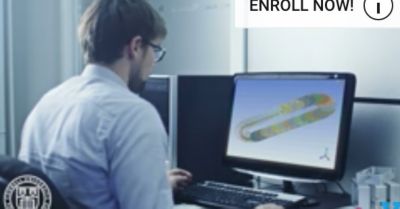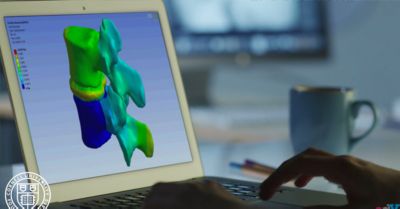-
United States -
United Kingdom -
India -
France -
Deutschland -
Italia -
日本 -
대한민국 -
中国 -
台灣
-
-
產品系列
查看所有產品Ansys致力於為當今的學生打下成功的基礎,通過向學生提供免費的模擬工程軟體。
-
Ansys Blog
February 3, 2017
FREE Cornell University Course Teaching Engineering Simulations
Do you or someone you know want to learn how to simulate exciting engineering applications using Ansys and pick up a practical skill sought by employers? Starting next week, February 15th, Cornell University is offering a Massive Open Online Course (MOOC) that teaches the hands-on use of Ansys.
This FREE online course entitled “A Hands-on Introduction to Engineering Simulations” is self-paced, enabling participants to go through the lecture videos and complete homework problems on their own schedule. Interested people can sign up now.
This is the first MOOC to teach the hands-on use of a commercial FEA or CFD tool and was initially offered in June 2016. It is a new kind of course that seamlessly integrates the fundamental math and physics with commercial FEA/CFD software use so that students can move beyond garbage-in, garbage-out and starting thinking like an expert. It covers the big ideas in FEA and CFD as well as how to apply them to solve practical problems using Ansys.
The course does not offer university credit but interested participants can get a verified certificate of completion for $49.
Learners can go through the course using free Ansys Student (version 17.2) or use a commercial/academic version that they may already have access to. Participants also have the option of running Ansys in the cloud via FRAME for a small fee. The advantage of this option is that users can run Ansys in a web browser on any device without the need to install it locally.
This MOOC is an initiative of the Swanson Engineering Simulation program at Cornell which supports the integration of simulation tools into engineering courses. The Swanson program was established through a gift from Dr. John Swanson, the founder of Ansys Inc.
I have had the privilege of leading this program since its inception in 2000 and the MOOC is the culmination of our efforts to integrate professional simulation software into the engineering curriculum. The MOOC draws content from five mechanical and aerospace engineering courses at Cornell, presenting a uniform approach across solid mechanics, fluid dynamics and heat transfer.
Video lectures cover the math and physics background as well as steps in the Ansys interface. The videos are on average 4 minutes long and overlay writing on a virtual chalkboard, PowerPoint® slides and Ansys demos. The online lectures were rated as exceeding expectations by nearly 80% of the students in the first offering.
One of the modules — analysis of a bolted flange joint — has been developed in collaboration with Mr. Andy Sadhwani, an aerospace engineer at SpaceX. Andy describes how to develop the Ansys model from the real application by making assumptions and simplifications and how to interpret the Ansys results. Students have greatly appreciated hearing directly from an industry expert as they are working with the tool.
Over 25,000 people from 167 countries registered for the previous offering. Of these, around 9,000 people were active with nearly 1,600 completing the course. I am very excited about the future prospects of this initiative which combines two disruptive technologies — online learning and physics-based simulations. It is not only helping me teach thousands of people worldwide but also changing my on-campus instruction by helping me flip the classroom. With lectures online, I can use classroom time to help students complete homework and apply their knowledge. I see this as moving from lecturing to mentoring in the classroom.












